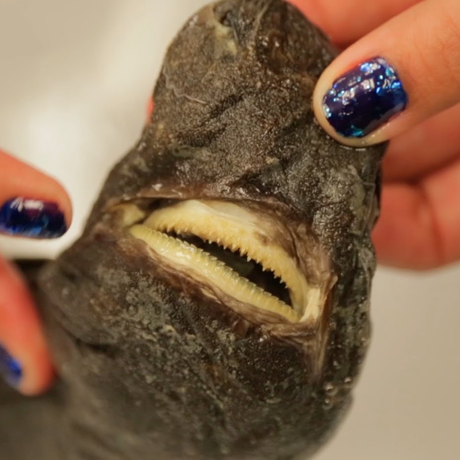Science News
New Discoveries: Tiny Life
New Discoveries is a collaboration between Stanford and Academy scientists and staff, appearing on the second and fourth Wednesdays of every month. Here we celebrate new species publications and demonstrate how much more there is to learn about life on Earth.
Microsnails
“There is so much life in a dimension ordinary people do not see." That’s what world snail expert Eike Neubert said in National Geographic talking about seven new species of microsnails published late last month in ZooKeys. These snails are truly tiny—about 1.35 millimeters in shell height and width, they are the smallest land snails on the planet—and were all discovered in the Chinese province of Guangxi. Little is known about microsnails in general for two reasons, according to the study’s authors: i) many microsnails are reported from caves or known to inhabit inaccessible rock outcrops; ii) many microsnails are also found in only one or a few places. And, oh yeah, they're tiny!
Chigger Mites
Three new species of trombiculid mites from Taiwan were described last week in the Journal of Medical Entomology, and they’re even smaller than the snails, just 100 micrometers across. Unlike the snails, they can also be dangerous. As larvae, this type of chigger mites feed on the skin of their hosts—other animals, including humans—by excreting a chemical that dissolves the skin into liquid form, which they then ingest. This can cause irritation, and often worse—the mites also spread disease, specifically scrub typhus. Scientists discovered them on shrews and rodents in rural areas where scrub typhus is prevalent. “After a two-night sampling of 21 rodents in forests of a single mountainous site of 1,948 meter height, we discovered two new chigger species and nine newly recorded species [in the area],” says study author Hsi-Chieh Wang. “Such information suggests that many more chigger species are awaiting discovery in Taiwan, particularly in mountainous regions.” Yipee!
Grand Geckos
Measuring 100 millimeters (under four inches) long, the newly discovered gecko Hemidactylus yajurvedi is our largest discovery of the post and big for the abundant Hemidactylus genus (yet pretty small in the grand scheme of things). This new species was first detected in collections at the Zoological Survey of India, collected in the 1970s in the Kanker district in India. To confirm the gecko’s existence, scientists went back to the Kanker district to collect more specimens and tissue samples for genetic testing. Sure enough, the species was distinct from its neighbor, H. giganteus, even visually, with tubercles on its tail. The new gecko was recently published in Zootaxa. Scientists believe more new species could be hiding in the area, too, so stay tuned!
Image(s): microsnail, B. Páll-Gergely and N. Szpisjak; mite, Entomological Society of America; gecko, B.H.C.K. Murthy
Rob Jackson is a professor of earth sciences at Stanford University. He travels the world for his job, from the rainforests of Peru to the deserts of South Africa and Patagonia.





